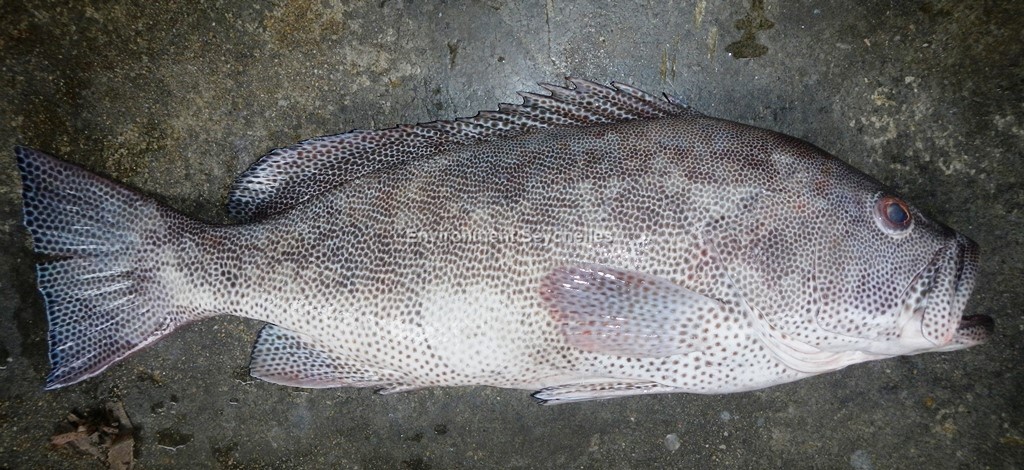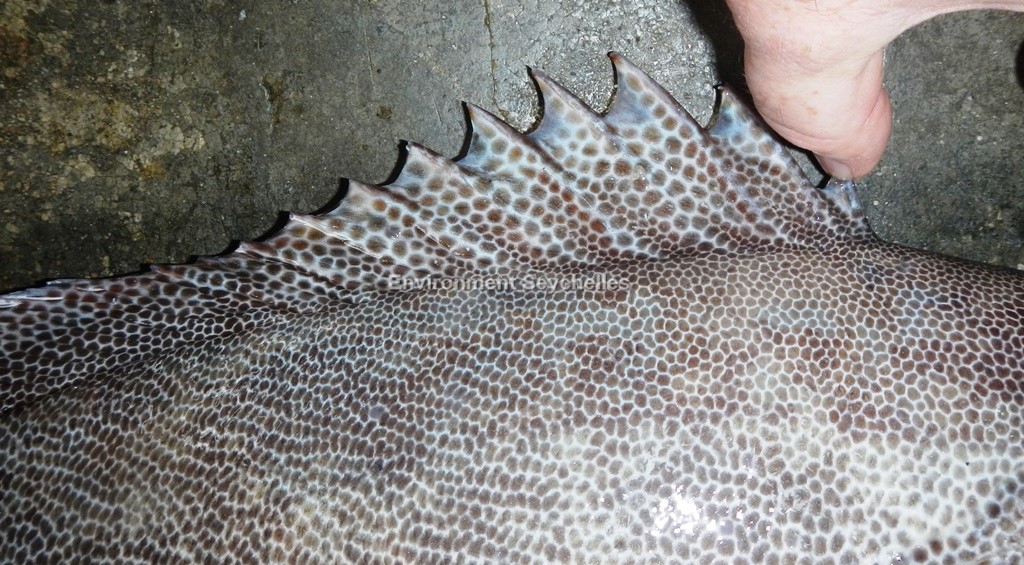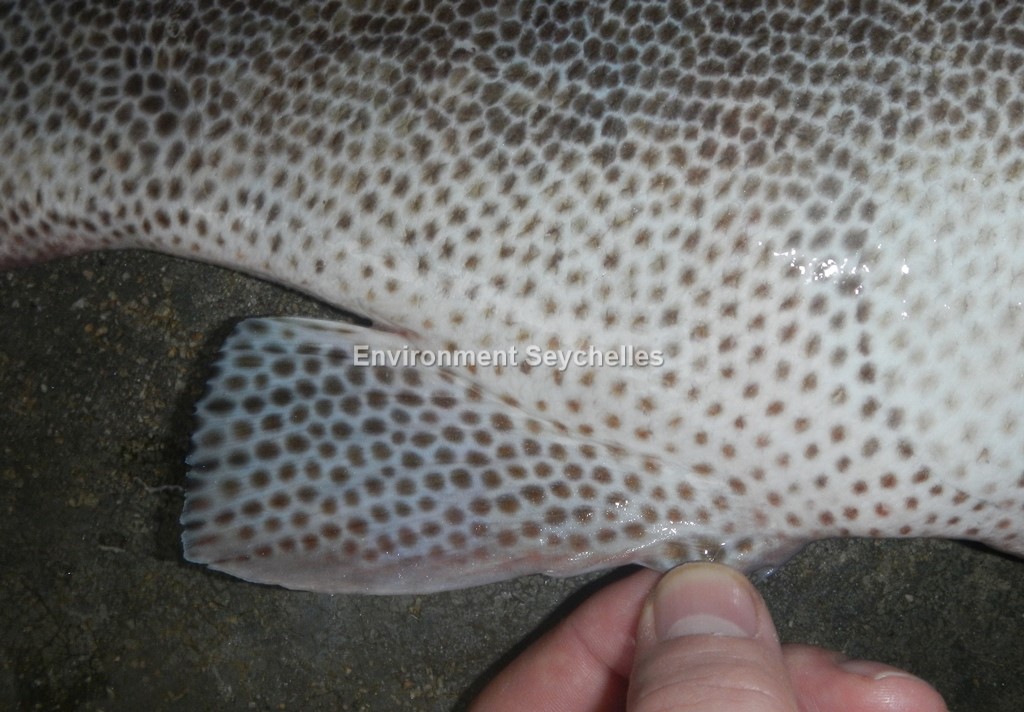Description:
Dorsal spines: 11; Dorsal rays: 16-17; Anal spines: 3; Anal soft rays: 8.
Dorsal head profile almost straight; preopercle angular, upper edge of operculum straight; posterior nostrils slightly larger than anterior ones; maxilla reaches to below
rear half of eye. A pair of small fixed canines at front of jaws; midlateral part of lower jaw with two rows of teeth, the inner ones twice the length of the outer. The
anterior interspinous membranes incised. Caudal fin truncate or slightly emarginate.
Colour. Head, body and fins pale, covered dorsally and on the flanks with numerous small close set dark brown spots. Spots on fins and dorsal parts of the head and body smaller and
closer together than those on the sides and ventrally. Gular area and anterior ventral area may be spot free. Spots may coalesce to form five bars on the body. Darker
maxillary streak present. A pair of small fixed canines at front of jaws; midlateral part of lower jaw with two rows of teeth, the inner ones twice the length of the outer.
The anterior interspinous membranes incised. Caudal fin rear edge a white margin and submarginal row of blackish brown spots.
Size:
Maturity: Lm unknown. Range unknown. Max Length: 61 cm.
(Bagley et al. 2009 record a maximum TL of 120 cm).
Habitat and Ecology:
Poorly understood species. Known from rocky areas adjacent to to soft bottoms (depth 10-155 m). The specimen photographed here was caught in deep water near the bordaz (edge)
of the Mahe Plateau.
Fishery Status:
This species is not protected or subject to fishery regulations. It is caught in the hand line fishery, typically from deeper water at the edghe of the plateau. Its relative
abundance, however, is hard to assess as it would typically be mistaken for Epinephelus chlorostigma. New Species record for Seychelles (J. Nevill 2014).
Notes:
Similar in appearance to E. Chlorostigma which differs in having fewer scales and a more pointed anal fin in adults. More work is required to clarify the differentiation and
relative occurrence of E. areolatus, E. chlorostigma, E. polylepis and possibly E. gabriellae in Seychelles.
References:
Bagley, N. et al. (2009). Fish Resources Assessment Survey of the Arabian Sea Coast of Oman. In: Bruce Shallard and Associates (eds), Technical Report 2: Demersal Fish
Resources of the Arabian Sea Coast of Oman. Summaries of distribution, biomass and biological data for secondary species. Final Report prepared for the Ministry of Fish
Wealth Sultanate of Oman.
Craig, M.T. et al. (2011). Groupers of the World - a field and market guide. NISC (Pty) Ltd, South Africa. ISBN: 978-1-920033-11-8
Froese, R. & D. Pauly. (Eds.) (2019). FishBase. https://fishbase.ca/summary/7358 (03/06/19).
Samoilys, M. (2018). Epinephelus polylepis. The IUCN Red List 2018: http://dx.doi.org/10.2305/IUCN.UK.2018-2.RLTS.T132753A46628718.en. (06/03/19).
Citation:
Nevill, J.E.G. (2019). Epinephelus polylepis, Smallscaled grouper. Seychelles Seatizens www.seatizens.sc . https://seatizens.sc/species/epinephelus-polylepis-randall-heemstra-1991/ (edited 05/08/22).




There are no comments